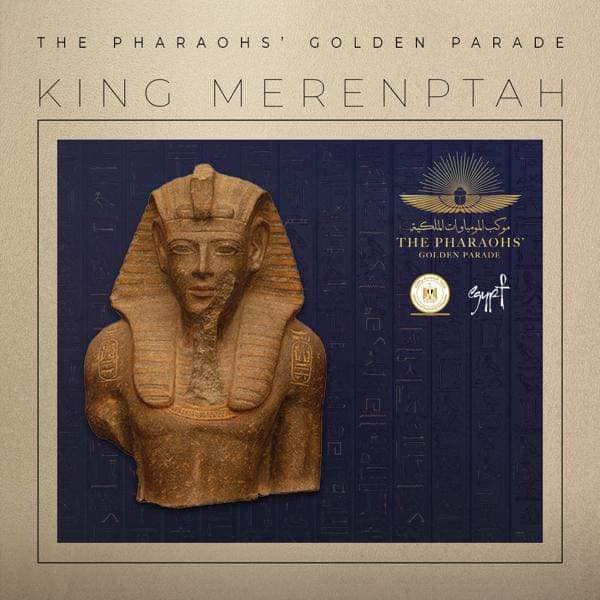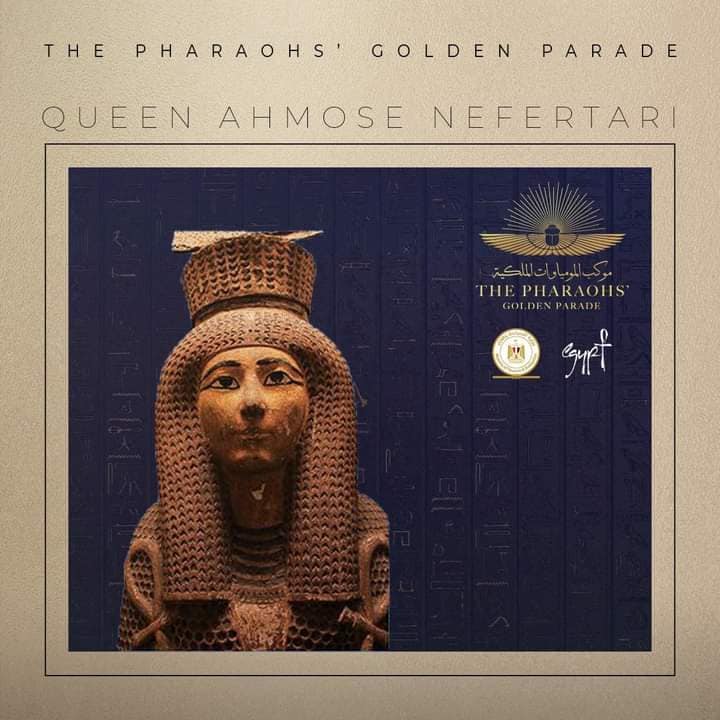
📣🔴 Stay tuned! And watch the unrivaled Pharaohs’ Golden Parade tomorrow at 06:00 PM Cairo Time.
Here are number of kings and queens whose mummies will be moved from The #Egyptian Museum in Tahrir to The National Museum of Civilization in Fustat 👇
#ThePharaohsGoldenParade
Here are number of kings and queens whose mummies will be moved from The #Egyptian Museum in Tahrir to The National Museum of Civilization in Fustat 👇
#ThePharaohsGoldenParade

King Siptah: He came to the throne as a boy, by a powerful official named Bay. Since he was too young to rule, his stepmother Tawosret, wife of Seti II, took on the role of regent.
His mummy was discovered in 1898 in the Tomb of Amenhotep II (KV 35) in Valley of the Kings, #Luxor
His mummy was discovered in 1898 in the Tomb of Amenhotep II (KV 35) in Valley of the Kings, #Luxor

Ramses II: He signed the first known peace treaty in history with the Hittites and was remembered as a great warrior, King Ramses II is arguably the most famous of the New Kingdom pharaohs. He recorded his Battle of Kadesh, which he fought against the Hittites, in multiple places 

Ramses II built temples almost everywhere in #Egypt. Most famous of which are Abu Simbel and the Ramesseum. His Great Royal Wife was Nefertari, for whom he built a temple near his own in Abu Simbel. His mummy was discovered in Deir el-Bahari Cache (TT 320), west of Luxor in 1881
Ramses III: Considered the last of the great “warrior pharaohs” of the New Kingdom, he fought many notable battles and is remembered as skilled in the art of warfare.
He fell victim to a plot devised by a minor wife, Tiye, to put her son Pentawer on the throne.
He fell victim to a plot devised by a minor wife, Tiye, to put her son Pentawer on the throne.

Several papyri tell of this “harem conspiracy” to kill the king, which involved various officers, members of the royal harem, and high court officials. CT scans carried out by the #Egyptian Mummy Project showed clearly that the Ramses III throat had been cut from behind.
Ramses IV: Although his father was murdered by conspirators trying to take over the throne for the son of a minor queen, the legitimate crown prince, Ramses IV, succeeded in keeping the crown. His mummy was discovered in 1898 in Tomb of Amenhotep II in Valley of the Kings, #Luxor 

King Merenptah: Son of the Great Ramses II, New Kingdom, Dynasty 19. Due to his father’s very long reign, he ascended the throne at an advanced age.
His mummy was discovered in 1898 in the Tomb of Amenhotep II in the Valley of the Kings, Luxor.
His mummy was discovered in 1898 in the Tomb of Amenhotep II in the Valley of the Kings, Luxor.

King Seti II: The mummy of the fifth pharaoh of Dynasty 19, was discovered in 1898 in the Tomb of Amenhotep II in Valley of the Kings, #Luxor. It was found enshrouded in many layers of exceptionally fine linen. The ancient #Egyptian King Seti II facial features are well-preserved 

King Amenhotep II: He is the son of King Thutmose III of the Dynasty 18, New Kingdom. He fought campaigns securing wealth and power for #Egypt. The ancient #Egyptian king mummy was discovered in 1898 in his tomb (KV 35), the Valley of the Kings, #Luxor. 

Queen Hatshepsut: Daughter of King Thutmose I, the “Foremost of Noble Ladies”. Hatshepsut’s achievements as a powerful queen and then a ruling pharaoh have made her one of the most famous figures in ancient Egypt history. She was married to her half-brother, Thutmose II. 

She became #Egypt’s regent, a monarch in all but name. For several years, she ruled on behalf of her stepson. In ancient Egypt, women could not become pharaoh, Hatshepsut, the daughter of a pharaoh and wife of another, claimed purest royal bloodlines and declared herself pharaoh. 

Queen Merit Amun: She is the daughter of King Ahmose and Queen Ahmose-Nefertari was discovered in 1930 in tomb number (TT 358) in Deir el-Bahari, west of #Luxor. 

Queen Tiye: She is the daughter of Yuya and Tjuya of the New Kingdom and the wife of Amenhotep III, one of #Egypt’s most successful rulers.
Her mummy was discovered in 1898 in the Tomb of Amenhotep II (KV 35), in the Valley of the Kings, Luxor.
Her mummy was discovered in 1898 in the Tomb of Amenhotep II (KV 35), in the Valley of the Kings, Luxor.

King Thutmose I: He became king after Amenhotep I died without an heir. He came to the throne around the age of 40.
His accomplishments included substantial campaigns and the expansion of #Egyptian rule in the south.
King Thutmose I was the father of Queen Hatshepsut.
His accomplishments included substantial campaigns and the expansion of #Egyptian rule in the south.
King Thutmose I was the father of Queen Hatshepsut.

Queen Ahmose-Nefertari: She was powerful and influential during her lifetime, she maintained her power during the reign of her son, Amenhotep I; mother and son were venerated as a divinized couple by #Egyptians, especially in the Necropolis of Deir el-Medina. 

Amenhotep I: Second pharaoh of Dynasty 18, was a child when he became king and ruled with the assistance of his mother, Queen Ahmose-Nefertari.
He led several military campaigns and completed many construction projects. He was deified after his death alongside his mother
He led several military campaigns and completed many construction projects. He was deified after his death alongside his mother

King Seqenenre Taa: He was the ruler of Thebes (modern-day #Luxor). History remembers Seqenenre Taa as the king who began the liberation war against the Hyksos, a war which continued by his sons Kamose and Ahmose I. 

King Thutmose II: Son of King Thutmose I, Dynasty 18, New Kingdom. His reign was secured through his marriage to his half-sister, Hatshepsut, daughter of Thutmose I’s. His son, Thutmose III, succeeded him on the throne.
Studies show that he died at approximately the age of 30.
Studies show that he died at approximately the age of 30.

King Amenhotep III: He reigned 1390–53 BCE. He devoted himself to expanding diplomatic contacts and to extensive building in #Egypt and #Nubia.
He was the son of Tuthmosis IV and his lesser wife Mutemwiya, husband of Queen Tiye, father of Akhenaten, and grandfather of Tutankhamun
He was the son of Tuthmosis IV and his lesser wife Mutemwiya, husband of Queen Tiye, father of Akhenaten, and grandfather of Tutankhamun

Thutmose IV: Son of King Amenhotep II, from the eighteenth dynasty of the New Kingdom.
Thutmose IV was the King who erected “The Dream Stela” between the paws of the Great Sphinx at Giza.
Thutmose IV was the King who erected “The Dream Stela” between the paws of the Great Sphinx at Giza.

The Dream Stela tells us the story of how, as a young prince, he fell asleep in the shade of this colossal figure. The Sphinx appeared to him in his dreams and instructed him to clear away the sand that covered its body; in return, he would be made the next pharaoh…and he was! 

• • •
Missing some Tweet in this thread? You can try to
force a refresh


